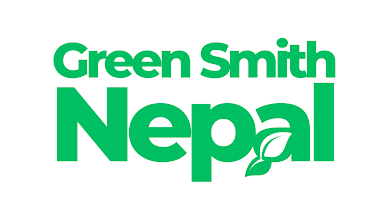Nepal is witnessing a profound generational uprising, as its digitally native Generation Z—individuals born roughly between 1997 and 2012—has taken to the streets to challenge systemic corruption, economic inequality, and perceived governmental authoritarianism. This movement, which erupted on September 8, 2025, has reshaped Nepal's political landscape, culminating in the resignation of Prime Minister K. P. Sharma Oli and widespread civil unrest.
A Generation Forged Online
Nepal has a median age of 25, placing a significant portion of its population within Gen Z, the age group with the highest social media usage. With nearly one social media account for every two people, the country's youth are deeply integrated into the digital sphere. This digital fluency has defined their activism, enabling rapid mobilization and coordination. Unlike previous youth movements that often relied on traditional political party structures, the "Gen Z protests" are largely leaderless and decentralized, organized through online platforms like Reddit and Discord, and amplifying their messages across various social media channels.
The Spark and the Deeper Fire
The immediate catalyst for the uprising was the government's sweeping ban on 26 social media platforms on September 4, 2025. While the government cited non-compliance with registration rules and the need to curb misinformation, critics—including former Justice Minister Gobinda Bandi and human rights groups—condemned the ban as a violation of constitutional rights to freedom of expression and an act of censorship.
However, the ban was merely the spark that ignited a deeper, more profound discontent. The protests were fueled by:
- The "Nepo Kid" Phenomenon: A viral social media trend, using hashtags like #NepoKids and #PoliticiansNepoBabyNepal, exposed the opulent lifestyles of political leaders' children, juxtaposed against the struggles of ordinary Nepalis. This highlighted perceived corruption, nepotism, and vast wealth disparities, particularly jarring in a country where the average annual income is just $1,400. Satirical videos, memes, and posts widely circulated online, turning abstract critiques into emotionally charged visual evidence.
- The Jobs Crisis and Migration: High youth unemployment rates, estimated at over 20%, have forced thousands of young Nepalis to seek work abroad, with remittances forming a significant portion of the country's GDP. The lack of dignified work opportunities at home and a mismatch between educational skills and market demands have created widespread frustration and a sense of "lost opportunities".
- Governmental Accountability: Protesters demanded greater accountability and transparency from leaders perceived as corrupt and unresponsive.
From Digital Dissent to Street Action
On September 8, 2025, what began as organized peaceful rallies by groups like Hami Nepal quickly escalated into widespread confrontations. Demonstrations in Kathmandu, particularly at Maitighar Mandala and near the federal parliament, saw tens of thousands participate. When protesters attempted to enter prohibited zones, security forces responded with tear gas, water cannons, rubber bullets, and live ammunition, resulting in at least 19 deaths and hundreds of injuries. Curfews were imposed across major cities.
The violence transformed the movement, turning it from a protest against a social media ban into a call for the total overthrow of the government. Protesters resorted to riots, arson, and vandalism, setting fire to the parliament building, the Supreme Court, the president's and prime minister's residences, and the headquarters of major political parties. The Nepali Army deployed troops, closed Tribhuvan International Airport, and began patrolling neighborhoods, making arrests.
Echoes of Other Movements
- Nepal's Gen Z uprising draws parallels with other youth-led movements globally and regionally:
- Enough Is Enough (Nepal, 2020): This earlier movement, also leaderless, non-violent, and digitally organized, protested the government's mishandling of the COVID-19 pandemic and lack of transparency. It established a new template for youth activism in Nepal, emphasizing creative and peaceful resistance.
- Arab Spring (2010): Similar to the Arab Spring, where digital platforms enabled coordination and narrative construction for youth to challenge entrenched power structures and overthrow governments.
- Regional Anti-Corruption Movements: Inspired by youth-led, anti-corruption protests that toppled governments in Sri Lanka (2022) and Bangladesh (2024).
- Global Activism: The movement reflects the broader trend of Gen Z activism seen in movements like the Global Climate Strikes, Black Lives Matter, End SARS in Nigeria, and the Hong Kong Protests, all leveraging digital tools for social and political change.
Reactions and the Road Ahead
The protests garnered significant domestic and international attention. Kathmandu Mayor Balendra Shah, himself a popular independent political figure, expressed strong support for the youth, though he could not participate due to an age cap set by organizers. Celebrities also publicly backed the movement. Internationally, India issued travel advisories and expressed grief over casualties, while Amnesty International and the UN condemned the crackdown, calling for independent investigations into the use of force.
With Prime Minister Oli's resignation, Nepal faces a dangerous power vacuum. The Safal Workers' Street Committee, formed by independent Marxists, has articulated radical demands including the arrest of the government, disarming the state, and the election of worker assemblies.
The Gen Z uprising in Nepal is a powerful testament to a generation unwilling to be silenced. By leveraging digital connectivity to amplify deep-seated frustrations over corruption, nepotism, and a lack of economic opportunities, they have demonstrated their capacity to rapidly mobilize and profoundly impact national politics, demanding a more just, transparent, and equitable future for Nepal. The world watches to see how Nepal's leaders will rebuild legitimacy with a generation that has shown it is willing to challenge and dismantle the old order.



0 Comments